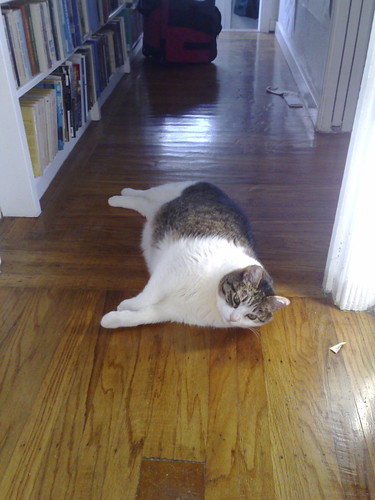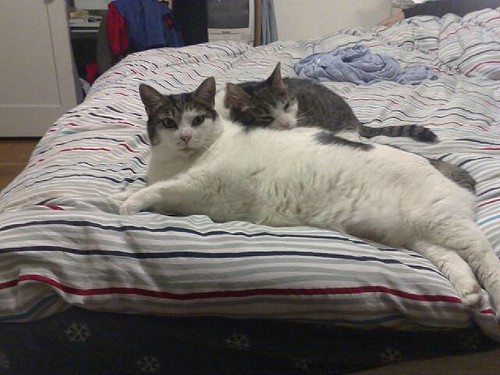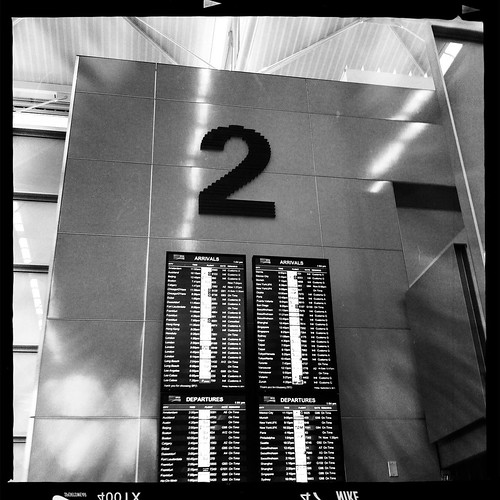“Nap rooms gone bad” sounds like the worst idea for a Disney channel show ever (not to mention an awful porn movie), but it’s a BBC article about how some companies are finding that nap rooms aren’t really a fit with their go-getter culture.
Last year, the technology start-up AskforTask.com set up a nap room to help ease fatigue among its web developers who were working long hours, sometimes as many as 70 per week…. [Unfortunately] “It didn’t take us long to figure out that naps were counter-productive,” said Nabeel Mushtaq, chief operating officer and co-founder of the 15-person Toronto company…. Six months into the nap programme, the once-efficient team was reaching only 55% of its weekly goals, down some 30 percentage points from before the sleep experiment.
Apparently there are a couple problems with these program. “Not everyone wakes up from a snooze able to bounce back to their previous energy levels,” the article notes. “And not all employees who leave their workstation for a ‘quick’ walk or game of table football or table tennis return promptly. ”
And at AskforTask, Mushtaq has transformed the company’s productivity-killing nap room into an “innovation lounge” featuring reclining chairs, low lights, music and a television. The idea is for employees to spend a few minutes relaxing and socialising as needed, but not snoozing.
In just six weeks, he says employee productivity has been restored to pre-nap-room levels.
“Just by changing the name and theme of the room we were able to see our employees achieving over 85% of their weekly goals,” Mushtaq said.
But it’s not as if naps are things that only slackers take. In earlier generations of workers, an afternoon nap was perfectly normal, though for different groups it held a different purpose.
For most workers (like the ones in the article), it was a way to recover some energy for the afternoon. This was especially true of manual laborers, farm hands, and the like.
But for a few– call this the Winston Churchill method– the afternoon nap was a way to split the day, to restore some energy before putting in another day’s work. As Churchill’s valet noted, he started taking naps while serving as First Lord of the Admiralty:
When the enormous pressure of work at the Admiralty during the First World War taxed even his vigour, he started to sleep every afternoon. The effect of this complete break is usually to make two working days out of one— and he literally does twice the amount of work of the average person and exerts himself for twice the length of the conventional eight-hour day.
In The World Crisis, Churchill himself explains that he took up the practice to match that of the First Sea Lord, Lord John Fisher.* Fisher was at his best in the very early morning, but
As the afternoon approached the formidable energy of the morning gradually decline, and with the shades of night the old Admiral’s giant strength was often visibly exhausted…. [In response]
I altered my routine somewhat to fit in with that of the First Sea Lord. I slept usually a hour later in the morning, being called at eight instead of seven, and I slept again, if possible, for an hour after luncheon. This enabled me to work continuously till one or two in the morning without feeling in any way fatigued.
John F. Kennedy did the same thing. Arthur Schlesinger described the practice in A Thousand Days:
After luncheon came the nap. Impressed by Churchill’s eloquence in praise of the afternoon nap, he had begun this practice in the Senate. It was a genuine sleep, in pajamas and under covers. He went off at once; and in forty-five minutes would awaken and chat as he dressed. This was Jacqueline’s hour of the day, as the morning was the children’s.
But generally he returned to the West Wing after his nap, where he worked until seven-thirty or eight at night.
So did Kennedy’s successor, Lyndon Johnson, according to Robert Dallek in Flawed Giant:
His agenda was so ambitious he needed a “two-shift day” to achieve it. Rising at 6:30 or 7:00 each morning, he began his workday in bed, where he read newspapers, the Congressional Record, and documents repared by aides who conducted early morning business in the bedroom. Johnson thought nothing of placing early morning phone calls to congressmen and senators. “I hope I didn’t wake ya,” LBJ told Ohio Congressman Wayne Hayes one morning at 6 a.m. “Oh, no,” Hayes replied. “I was lying here just hoping you would call.” Reaching the Oval Office at about nine, Johnson worked until 2 p.m., when he exercised by vigorously walking around the White House grounds or taking a swim.
The second half of his “day” started at 4 p.m. after a nap in his pajamas, a shower, and fresh clothes. It lasted until at least midnight and often until one or two o’clock in the morning. Sometimes the two shifts turned into an uninterrupted fourteen or sixteen hours. It was his means for not only doing good but also making a record that served his sense of self.
So what makes naps a boost to productivity rather than a drain on them? I see two things.
First, making sleeping on the job public or private makes a difference in its efficacy, and helps control some of the downsides. Consider how napping in Japan works. In Japanese companies, people do it at their desks (or sometimes under their desks); in other words, it’s treated as a public thing, with both public approval and public regulation, not something you have to be ashamed of or furtive about. There’s even a word for napping on the job or in class: inemuri.
But, as one expatriate notes, “There are unwritten rules. You must sleep sitting up, as if you’re ready to start work again in an instant, and power naps are a must.” Indeed, anthropologist Brigitte Steger argues that
curtailing night-time sleep and tolerating inemuri are two sides of the same coin that reflect the Japanese notion of diligence and time consciousness. Being diligent is measured on a subjective scale by the efforts one makes. These efforts can be judged only indirectly in at least three ways: by the hours one works (especially at night), by the busyness one reveals, and by the exhaustion and consequent inemuri the nocturnal work session causes.
Second, when the nap is a regular thing, it’s a lot more likely to be a productivity boost, rather than a productivity drain. Essentially, if your body becomes accustomed to a nap during the day, you’re more likely to be able to recover quickly, rather than stagger around, drink a bunch of coffee to try to wake yourself up, etc. Taking a nap only when you’re really sleepy isn’t going to be as effective; having a regular (brief) downtime is going to make you more productive over the long run, by giving your body the chance to learn how to handle this new rhythm of work and rest.
In other words, napping as a form of rest is good– if it’s a deliberate rest.
*(To those of you who aren’t already familiar with the administration of the Royal Navy, don’t worry about trying to parse the difference between First Sea Lord and First Lord of the Admirality. Just go with it.)


